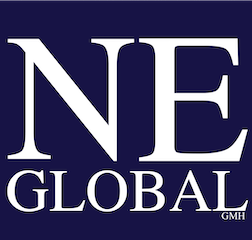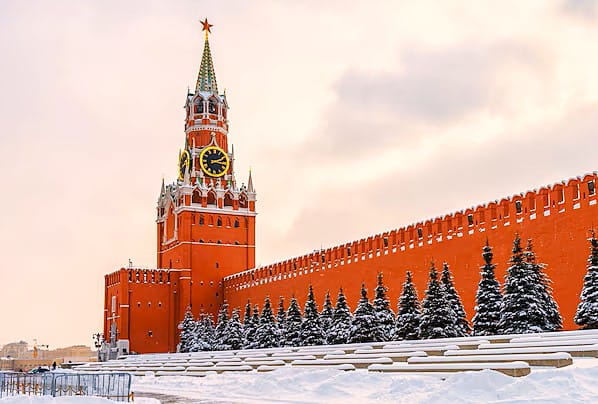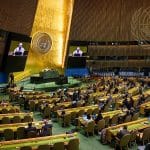The war in Ukraine is again front and center in the White House. While U.S. President Donald Trump’s Gaza peace drive had started to fade into the boring phase (for him) of technical negotiations on the Gaza plan’s Phase II implementation, a new foreign policy narrative was needed by the Trump White House, requiring the president to refocus on the seemingly impossible challenge of ending the Ukraine fighting before winter. On top of that, Trump is now off on a multi-stop journey to Asia.
Shifting gears to focus on Ukraine ceasefire negotiations
Even before Trump returned to Washington on October 14 after his light-speed Middle East trip, it was decided that the time had come for a renewed Ukraine peace push, and orders were issued to set up a new round of White House visits and teleconferences. At that point, last August’s Anchorage Trump-Putin Summit was widely accepted to have been a waste of Trump’s time and energy, and had actually handed Putin undeserved recognition and a new sanctions postponement without moving the peace process further, despite the emergency post-Anchorage White House visit by a large group of worried European leaders.
To get things back on track, a White House visit by Ukrainian President Volodymyr Zelenskyy was approved for October 17 — the same week Trump returned from the Middle East — with discussions to focus on potential deliveries of U.S. weapons systems to Kyiv, and much speculation followed about whether the procurement of U.S. medium range Tomahawk surface-to-surface missiles would be announced. Ultimately that did not happen, although crafty Russian diplomatic maneuvering is believed to have helped delay any Trump decision, along with relatively low U.S. stockpiles of that weapon.
Budapest is nice in October, isn’t it?
Trump’s August Ukraine peace initiative quietly faded into the press of the September UN General Assembly meetings and the like, and U.S. attention had accordingly shifted primarily to the Middle East. Despite this, one would not expect Trump’s team to drop the ball on Ukraine completely, but it definitely fell to a much lower priority while the focus was on Gaza.
However, it is somewhat unusual that Trump agreed to speak with Putin on October 16, the day before Zelenskyy was due in the White House. As “transactional” as Trump is, one would expect him to be wary of being “played” again by Putin for more time to capture small bits of Ukrainian territory, as happened after the August Anchorage Summit. Russian sources indicated that it was the Russian side that requested the call to Trump ahead of Zelenskyy’s visit.
Precisely what happened in that call is not fully known, but it appears Trump proposed a bilateral meeting in Europe (Budapest) in the near future, in a country where both sides felt comfortable. Putin reportedly agreed, but both sides presented the plan to the world as a mutual decision, and all parties got to work on specifics. In the call there were also mentions of territorial swaps, the idea of which horrifies most of Europe as well as Ukraine since Russia again apparently attempted to negotiate with the U.S. over Ukraine’s head.
These discussions clearly impacted Zelenskyy’s chances of making progress on advanced U.S. weapons supplies in his October 17 White House meeting, which was reported in some media outlets to have included several rough spots despite being advertised as an “overall success.” As Zelenskyy went home empty handed, that description is open for debate, and Kyiv has labeled the Putin call as a major factor.
But Trump’s hoped-for Budapest summit was not to be. Both sides had concerns about inadequate time for preparations, but more problematic was Russia’s continuing hardline stance on key issues. U.S. Secretary of State Marco Rubio spoke to Russian Foreign Minister Sergei Lavrov on October 20, and reported that Lavrov reiterated the previous Russian position on key issues, quoting Lavrov, “I want to officially confirm: Russia has not changed its position compared to the understandings that were reached during the Alaska summit.”
In view of this, the Budapest Summit idea was put into deep freeze by the U.S. side, the original source of the proposal, which was just as well since the U.S. President had been planning a complex multi-stop trip to Asia for late October. Trump told reporters later on October 20 that he did not want a “wasted meeting” with Putin, adding: “I don’t want to have a waste of time, so I’ll see what happens.” He had apparently concluded that Washington needed more leverage to soften Moscow’s hardline approach to negotiations, which may have stiffened further after Zelenskyy returned home from Washington empty handed.
Sanctions announced, finally
Obviously, the Trump team has had a package of Russia sanctions ready for signature since last summer when Trump started issuing deadlines for action, which he later ignored. He was also facing congressional pressure as legislation calling for sanctions has been ready to move forward for months, but ultimately congressional leaders opted to keep the legislation, the so-named “Sanctioning Russia Act of 2025” ready to support Trump when he moved forward against Russia.
Spearheaded by Republican Senator Lindsey Graham with a bipartisan supermajority of 80 co-sponsors, the bill proposes measures including a 500 percent tariff on imports from nations buying Russian oil, natural gas, petroleum products, or uranium, along with expanded restrictions on Russian sovereign debt and financial transactions involving sanctioned entities. The bill’s tough trade measures make the Trump administration’s 25 percent additional “punitive” tariffs on India for purchasing Russian oil, announced in August before the Anchorage Summit, look like a party favor (the total is 50 percent). At that time India indicated the tariffs would have no impact on its oil purchase decisions, but since the October 22 U.S. announcement, major Indian oil importers are publicly indicating “flexibility.”
The impact of the legislation is hard to isolate but it is significant. First of all, it allows the Trump administration to demonstrate in negotiations how much tougher Congress wants to be with countries that trade with Putin’s Russia, in a classic “good cop/bad cop” breakdown. Second, and more perhaps important, it reinforces the Trump administration’s penchant for using tariffs as sanctions, vastly increasing the economic scope and impact of any sanctions decisions. That threat clearly gets the attention of top leaders in export-focused countries like China, with whom Trump will likely meet soon.
So, on October 22, President Trump gave the green light, and the U.S. Treasury Department’s Office of Foreign Assets Control (OFAC) issued the Trump administration’s first direct sanctions against Russia. While these steps are not massive enough to freeze markets, as Trump seemed to believe, the key point is that the Trump administration has finally rejoined the western sanctions effort against Russia, which the U.S. actually led under the Biden administration.
The Treasury Department’s new package imposed further sanctions on two major Russian oil companies as a result of “Russia’s lack of serious commitment to a peace process to end the war in Ukraine.” Because U.S. imports of Russian oil and gas were already insignificant as a result of the Biden sanctions, the new measures from October 22 will likely not have any visible impacts on U.S. energy supplies.
The October 22 sanctions target Russia’s two largest oil companies, Open Joint Stock Company Rosneft Oil Company (Rosneft) and Joint-Stock Company Oil Company Lukoil (Lukoil). Rosneft is a vertically integrated energy company specializing in the exploration, extraction, production, refining, transport, and sale of petroleum, natural gas, and petroleum products. Lukoil engages in the exploration, production, refining, marketing, and distribution of oil and gas in Russia and internationally and formerly even had a sizeable network of gas stations (2000+) in the U.S., including a highly visible spot in the Georgetown section of Washington. After substantial divestitures, a small number of Lukoil stations remains in the Northeast U.S. (under 200), owned by private franchisees who suffered through a #BoycottLukoil campaign in 2022 at the start of the Russian invasion. Additionally, Treasury designated a number of Russia-based Rosneft and Lukoil subsidiaries.
Announcing the sanctions, Secretary of the Treasury Scott Bessent said, “Now is the time to stop the killing and for an immediate ceasefire.” He amplified, “Given President Putin’s refusal to end this senseless war, Treasury is sanctioning Russia’s two largest oil companies that fund the Kremlin’s war machine. Treasury is prepared to take further action if necessary to support President Trump’s effort to end yet another war. We encourage our allies to join us in and adhere to these sanctions.”
Bessent’s message was clear, more sanctions are likely on the way. Time will tell, and of course sanctions enforcement remains critical because Russia is adept at developing new diversion channels in third markets and new mechanisms, such as use of special cryptocurrencies. Treasury’s sanctions announcement also included an explicit reference to potential secondary sanctions on financial institutions.
The two sentences below strike fear into the hearts of bankers everywhere, and especially the banks’ legal departments, as they translate into “extraterritoriality,” meaning Washington can cut off access to the all-important U.S. financial system for sanctions violations: “Furthermore, engaging in certain transactions involving the persons designated today may risk the imposition of secondary sanctions on participating foreign financial institutions. OFAC can prohibit or impose strict conditions on opening or maintaining, in the United States, a correspondent account or a payable-through account of a foreign financial institution that knowingly conducts or facilitates any significant transaction on behalf of a person who is designated pursuant to the relevant authority.”
The bottom line here is that secondary sanctions, in this case financial, can be imposed by Treasury regardless of any additional tariff decisions that the Trump administration may opt to invoke, or are called for by legislation in the future. Russia’s energy trade partners have no choice but to take notice, especially those now dealing with Rosneft and Lukoil or subsidiaries.
EU and the “Coalition of the Willing” strengthen Ukraine’s hand
Europe played an important role supporting Ukraine with decisions flowing from the October 23 European Council (EUCO) meeting along with a special “London Summit” October 24 of the “Coalition of the Willing,” both with Ukrainian President Zelenskyy in attendance.
On October 23, the European Council adopted the 19th sanctions package of further 69 individual listings and numerous new sanctions targeting key sectors which fuel Russia’s invasion of Ukraine, including significant steps on energy, finance and sanctioning elements of the military industrial complex. The Council decided to ban imports of Russian liquefied natural gas (LNG) into the EU, starting January 2027, and within six months for short-term LNG contracts. New measures target non-EU tankers that are part of the “shadow fleet” moving Russian crude, with 117 additional vessels added to the EU ban including port services.
The Council also strengthened control over the movement of Russian diplomats across the EU and took further measures against those responsible for the abduction of Ukrainian children. It also imposed further measures on Belarus to restrict its support for Russia’s war effort.
However, no final decision was reached on converting the frozen Russian central-bank assets (around €140 billion) into a reparations-loan for Ukraine — Belgium in particular raised legal/technical concerns because the Belgium based institution, Euroclear, holds the assets that would be used to fund the €140 billion loan. Belgian Prime Minister Bart De Wever called on all EU members to share the costs of any retaliatory legal action pursued by Russia and contribute financially if the money ever had to be paid back. The Commission was asked to provide the Council with Ukraine loan options before the next summit.
The October 24 “London Summit” hosted by PM Keir Starmer in London, gathered Ukraine’s key backers (a number dialed in) and reiterated the need for maximum pressure on Russia. The outcomes are more politically significant than legally binding. Welcoming U.S. sanctions on Russia, host Starmer argued that the coalition’s goals should be the removal of Russian oil and gas from the global market, the upgrading of Ukraine’s air defense and energy infrastructure, while completing the work on using Russian sovereign assets for a large Ukraine loan.
The Summit called for supplying Ukraine with long-range offensive missiles and for enhancing Ukraine’s air defense and energy-infrastructure ahead of winter. The Summit reinforced the idea that that Ukraine must be party to any future peace talks and that the sovereignty and security of Ukraine must be guaranteed.








